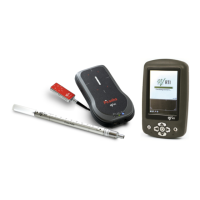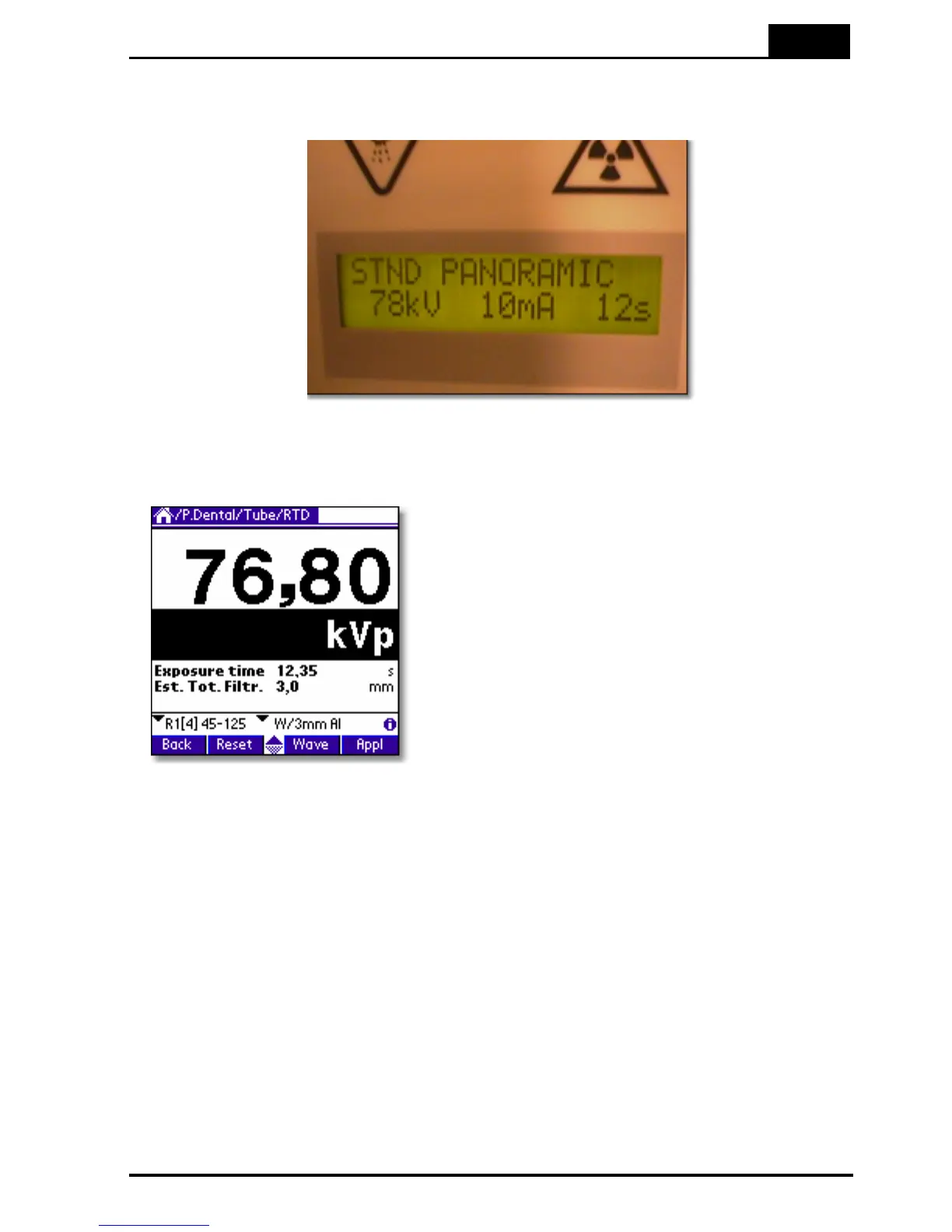5. Measurements with the Piranha System
Dental and Panoramic Dental
2014-06/5.5C
133
Piranha & QABrowser Reference Manual
8. Press the rewind button on the panoramic unit to take back the unit to start position.
9. Select kV, mA, and scan time.
10. Start the scan. A little triangle in the RTD indicates that the Piranha detects the
radiation. It is not needed to use the whole scan for the purpose of measure the kV
since the display is continuously updated.
11. Stop the panoramic dental unit. The RTI logo
flashes and the last kVp value is displayed. As
complementary information the estimated total
filtration is measured as well as the scan time.
The figure shows the RTD after a complete
scan.
The waveform is also automatically stored after the delay time in the beginning of the
scan or acquired when Hold is activated during the scan.
5.6.4 HVL, Total Filtration, and Quick-HVL
It is not unusual that the total filtration is as low as 2.0 mm Al on an dental unit,
compared to 2.5 to 3.5 mm on an normal radiography unit. The method that the Piranha
uses to estimate the total filtration in the range of 1.2 to 38 mm has an absolute
inaccuracy in order of ±0.3 mm, but is very straightforward to find an "unknown" filter in
the beam. You can always use the standard HVL method adding extra filter in the beam.
In that case, use the same procedure as described in the section for the normal
radiography measurement.

